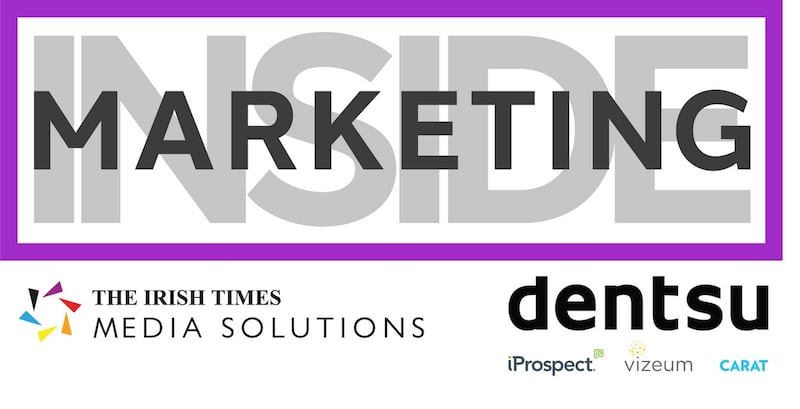Advertising has been around for a very long time. The ancient Egyptians scrawled sales messages on papyrus. The ruins at Pompeii boast lurid signs directing its citizens to brothels and bars in much the same way McDonald’s might alert you to a nearby restaurant today.
It has morphed along the way, of course, not just to keep pace with consumer tastes or a changing legislative framework but also to exploit the media and technology of the moment.
Laurence Green, independent creative advisor and founder of Fallon London and 101, joins us for an in-depth discussion around current creative trends and executions. Listen now:
The last 50 years have featured two mighty inflection points in that regard: the birth of commercial (and colour) television on the one hand, and the birth of the internet and the “digital revolution” on the other.
The first of those – dating back to the late 1960s and early 1970s, the period roughly spanned by the TV show Mad Men – profoundly changed the way we produced and consumed advertising.
The second – generally ascribed to the noughties, with the arrival of Google, Facebook and YouTube in 1998, 2004 and 2005 respectively – changed advertising just as dramatically, on this occasion as one part of a much wider digital disruption story.
Advertising remained in comparatively limited supply, skewed strongly towards broadcast media
From today’s vantage point, it’s clear that those respective technological advances ushered in dramatically different advertising cultures.
The first heralded an era where advertising was relatively popular, or at least commonly tolerated as the “price” of receiving free-to-air television. Advertising remained in comparatively limited supply, skewed strongly towards broadcast media, and so towards shared (or communal) consumption, whether for a beer commercial or political poster. It became a common language and cultural touchstone.

The second inflection point at first seemed complementary to the status quo but was soon understood to be competitive. Some broadcast habits remained (most obviously TV, albeit with typically diminished audiences) but the last few years have seen the unstoppable rise of personalised media powered by algorithms, as anyone who has been chased around the internet will be aware.
The kings of the new advertising business are the likes of Google and Facebook, with their massively dominant industry positions. The disruptors have been disrupted, and something precious has been lost along the way.
High standards
Through the 1980s and 1990s, advertising’s creative standards were high, if uneven. Agency fortunes tracked their showreels. Media brains sat at the same table as creative. Clients were rewarded with stronger brands and higher sales.
And so the advertising ecosystem was a benign one for its many players, and not least the consumer audience, whose media habits were co-funded with a minimum of personal intrusion.
Those conditions remained in place when we opened the London office of the Minneapolis creative hotshop, Fallon McElligott, in 1998.
The Skoda brand had become a figure of fun in British tabloid circles. You can still find the Skoda jokes online
Three campaigns of ours would achieve that most desirable yet elusive of advertising qualities: fame. Looking back, they also map its shifting sands and the misplaced creative optimism of the early years of “digital”.
In the 1990s, by dint of being the only market to have imported cars produced under monopoly conditions in Czechoslovakia, Skoda was widely ridiculed in Britain, despite having been acquired by the VW Group. The brand had become a figure of fun in British tabloid circles. You can still find the Skoda jokes online.
At our briefing, the client got straight to the point: “We’ve got children crying in our showrooms” – mortified by the prospect of being dropped off at school or picked up from a party in one.
The problem was less one of persuasion at an individual level and more one of managing the brand’s shared meaning to defuse that antagonism. Something that broadcast advertising can, or could, do rather well.
The resulting campaign depicted Skoda’s naysayers as folk well behind a more general curve of appreciation for their new cars, showcasing the (new, and really rather good) Fabia under the banner thought: “It’s a Skoda. Honest.”
Brand sentiment turned overnight, not least because our audience understood that millions of others had witnessed Skoda’s reinvention, and to be on the wrong side of the argument was now a minority position.
Like No Other

When Sony asked us to launch its Bravia TV range in 2005, it had lost its sheen to Apple and its market share to Samsung and LG. We would be obliged to use a new global tagline: Like No Other.
To live up to that endline, our creative director was insistent that Sony had to do advertising like no other. His plan? “We bounce thousands of coloured balls downhill and film them.”
Sony Balls was one of the first commercials to be powered by new media before it reached “old”. Shot in San Francisco, our production inevitably attracted the attention of one of the world’s most wired communities. The photo-sharing site Flickr was flooded with pictures of the event. We were enjoying free media and campaign buzz before spending a cent with any media owner.
Old media (TV) would soon power Balls into the public consciousness and José Gonzáles into the charts. The commercial had to be taken off air while Sony built a second factory to fulfil unprecedented demand. It was an accidental playbook that we would soon put to work more deliberately.
The spot that resuscitated Phil Collins's career failed all manner of research hurdles
Cadbury’s Gorilla is regularly named Britain’s favourite commercial, almost 15 years on. After what is now a long-forgotten salmonella scandal, the creative gauntlet on Dairy Milk had been thrown down to create advertising that was as enjoyable as the product itself.
The spot that resuscitated Phil Collins’s career failed all manner of research hurdles. Once on air, however, it was enthusiastically shared and remixed on YouTube, by both the audience and our own expert seeders: by popular consent the first mass-market viral ad, seen by 90 per cent of our audience even though we’d bought considerably fewer eyeballs.
New golden age
At this point in the cycle it seemed that “new media” might embellish both the distribution of and engagement with advertising. Commentators predicted a new golden age.
In fact, the reverse happened. Client spend in the digital era has migrated to activation (shaking the sales tree) rather than brand-building. By common consent, creative standards have fallen. If people now talk about advertising at all, it is often to request that we “turn off the digital firehose”. Adblockers are frequently downloaded to do just that.
So what if the digital plumbers have displaced the analogue poets? Creative destruction leaves many in its wake, and the industry is now on a more predictably scientific rather than mercurially creative footing.
But there are several related reasons to be less than cheerful about the way advertising has turned. First of all, digital media is driving many brand owners towards efficient short-term harvesting of their immediate customer base, and away from the much larger (and more profitable) returns from long-term brand-building among the many.
In turn, advertising is less well-liked. Research company Kantar TGI has been tracking agreement that “the adverts are as good as the programmes” for almost 40 years. This grew throughout the 1980s before peaking at 32 per cent in 1991: evidential support for that golden age.
Less likable advertising means less effective advertising
Advertising’s popularity has waned ever since, and now languishes in low double digits. This despite the claims made by the digital disruptors for their superior targeting powers and the removal from our line of vision of “adverts for things you’re not interested in”.
This matters for clients, because advertising likability has long been understood to be a primary driver of effectiveness at a campaign level. Less likable advertising means less effective advertising.
But it also matters at a more communal level, as another cultural tie is unwound. There was a time not long ago when a dancing man and a drumming gorilla were part of the national conversation. On the one hand, due reward for creative advertisers; on the other, a happy byproduct for all.
Commercials like those renewed the industry’s licence to operate at a time when the volume of advertising was multiplying. But trust in advertising is today at an all-time low, driven there by concerns about privacy and commercial bombardment.
The ship is tilting. It’s in the interests of the advertising industry, of brand owners and of their audiences to beat a path back to creatively-led, broadcast, brand-building activity.
Laurence Green was a co-founder of Fallon London and 101. He is now an independent adviser to creative businesses
[ irishtimes.com/insidemarketingOpens in new window ]













